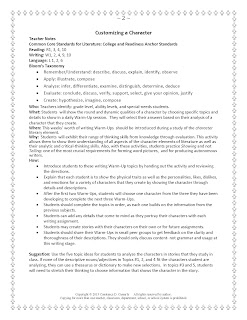In one scene that proves to be a pivotal point in the plot, Forrester has Jamal sit at a typewrite and just start to type while he does the same thing. The aging author begins to type immediately, while Jamal just sits there. When Forrester finally notices that his protege is doing nothing he asks why. Jamal says that he, "can't think of anything to write." With typical Connery scoffing, Forrester says, "First write from the heart; then write from the head.
This quote became a mantra for my students- creative and expository writers. Over-thinking creates a what they said (writing from the heart) with the how they said it (writing from the head).
jumbled mess of ideas bouncing around the brain resulting in such an idea mess that Writer's Block sets in. As Forrester said and as I reiterated to my students daily, "Just write what's in your head, even it it doesn't make sense at first." I explained that eventually some sense would come to the piece and the students could cut, paste and revise both the contextual what they said and the grammatical how they said it.
After explaining this to his protege, Forrester grabs a folder of his writing and gives it to Jamal. He tells him to choose one manuscript and to start to type it until his own words begin to flow. The young man does this and ends up with a piece that Forrester claims, "You made this your own."
This Great Beginnings! activity follows this same premise. Students choose one of twenty-five first paragraphs from a variety of published authors, type or write it on their own papers, and then create a complete story from that point. They may just use the author's idea from the hook that they chose and totally change the setting, characters and any other information, or they can use the paragraph verbatim. In either case, they should include a parenthetical citation at the end of the paragraph that they used, before they continue their story, in their own words.
You choose the minimum length (I suggest 1500 words at the very least) and the maximum. I never gave a maximum, but told students to, "Write until you have finished saying what you need to say." The time frame depends on what else you are covering in class, how much of the class period that you want students to spend on it after the first day and any other parameters that you need to consider.
My creative writing students spent forty-five minutes to an hour (we followed a 90-minute block) three days every other week (two days on alternate weeks) for a month. Any other time that they needed in order to complete the assignment they had to carve out of their days. My English students spent thirty minutes of the period writing, and completed the rest of their stories outside of class over a one-month span.
Along with the twenty-five Story Starts, students will fill out a 12- point Story Notes sheet to help guide them through their writing and to help them learn how to use each element of literature. Teachers receive a full page of Teacher Notes with the necessary Common Core
Standards and Bloom's Taxonomy standards and the who, what, when, why and How for the lesson.
With Great Beginnings! students will expand their understanding of the elements of literature from an author's point of view instead of only the readers' point of view. This knowledge will help them add depth to their reading comprehension as well as to their creative and narrative writing skills.Download it from: http://www.teacherspayteachers.com/Product/Activity-Write-Right-Great-Beginnings-712755.
Here is an interesting piece of trivia. Rob Brown (Jamal Wallace) answered a casting call for a walk-on role in this movie. He only wanted to make $100.00 to pay his cell phone bill. The director liked him so much, that he chose Brown for the co-lead. The role made Brown a star. I guess that he never had to worry about paying his cell phone bill again.
How do you help your students to find their writing voices? Please share some of your writing activities here.
Happy Teaching,














.jpg)





























